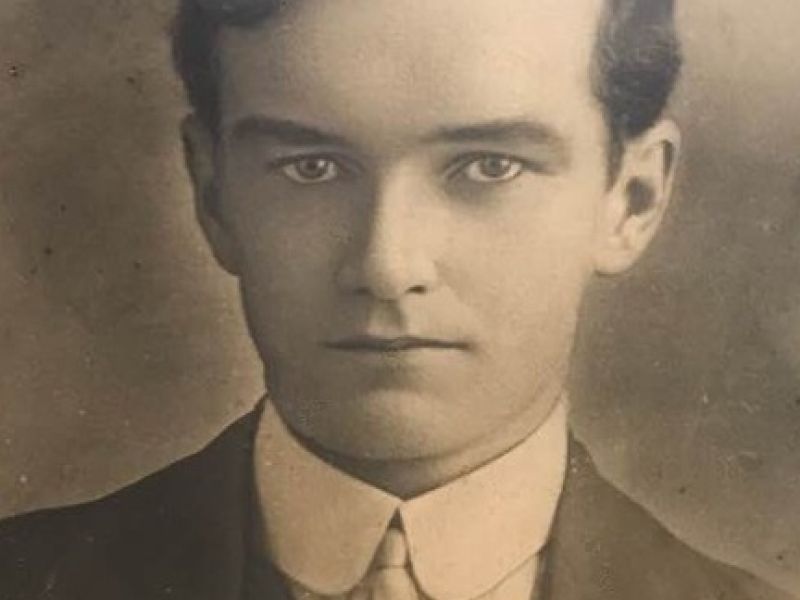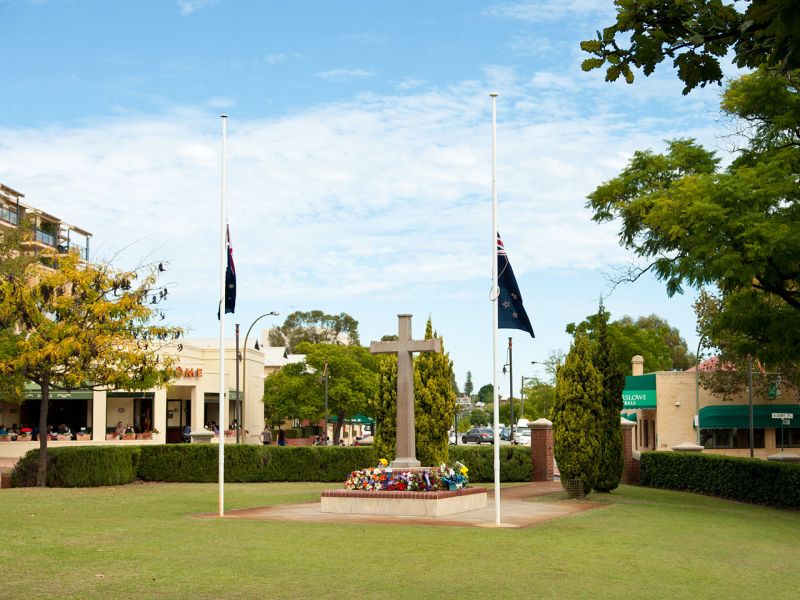Private Charles Stephen Haughey, 44th Infantry Battalion, AIF
Charles “Charlie” Stephen Haughey was born on 27 March 1892, the 8th and youngest son of Daniel and Mary Jane Haughey of Warragul, Victoria. When Charles was six, his family moved to Armadale in Western Australia. He attended Mundijong and Armadale State Schools, and later Perth Technical College.
Life was difficult for the Haughey family, and only the youngest children were able to receive an education. Charles Haughey never forgot the effort his mother made for his education. As a soldier, he sent the majority of his pay to her.
He worked as a delivery boy at the Armadale Post Office and later as a clerk in the Western Australian Lands Department.
Haughey was “one of the most popular and prominent young men of the parish”. He volunteered to fight in January 1916, and he soon joined the newly formed 44th Infantry Battalion. This unit was known as “Old Bill’s Thousand” after its first commanding officer, Lieutenant Colonel William Mansbridge.
On 6 June 1916, Haughey and the 44th Battalion sailed from Fremantle, Western Australia, for Plymouth, England, aboard the transport ship Suevic. Once in England, Haughey undertook special signals training at the camp at Tidsworth before returning to the 44th Battalion on 9 November 1916. Later that month, he sailed with his unit for France and the war on the Western Front.
Haughey and the 44th Battalion initialy served in the Armentieres sector of the front in northern France. Throughout November and most of December they remained behind the lines training, constructing huts and improving billets. On 22 December, they were inspected by Sir Douglas Haig, commander of the British Expeditionary Force, who commented on their “soldierly appearance and bearing”.
Throughout late December 1916 and into January 1917, they endured the hardships, horrors and drudgery of trench warfare on the Western Front. The men spent their time either manning the front-line trenches east of Armentieres, or training and working behind the lines.
On 30 January 1917, Haughey and the 44th Battalion were resting in billets behind the lines near Armentieres after having spent the previous six days on the front line. Haughey was in one of the huts with other members of his company when a corporal brought in the nose of an unexploded German artillery shell – which the men thought had already been detonated.
Haughey began tampering with the shell by tapping it with a hammer when it exploded, seriously injuring Haughey and two other soldiers.
Haughey was rushed to the 2nd Australian Casualty Clearing Station with severe and extensive injuries to his torso and right arm. Despite desperate medical attention, he died a few hours later.
He was 24 years old.
Charlie Haughey is buried in the Trois Arbres Cemetery in France, alongside over 1,700 casualties of the First World War.
David Sutton, Historian, Military History Section
- Australian War Memorial https://www.awm.gov.au/collection/AWM2021.1.1.133

 Australian War Memorial
Australian War Memorial